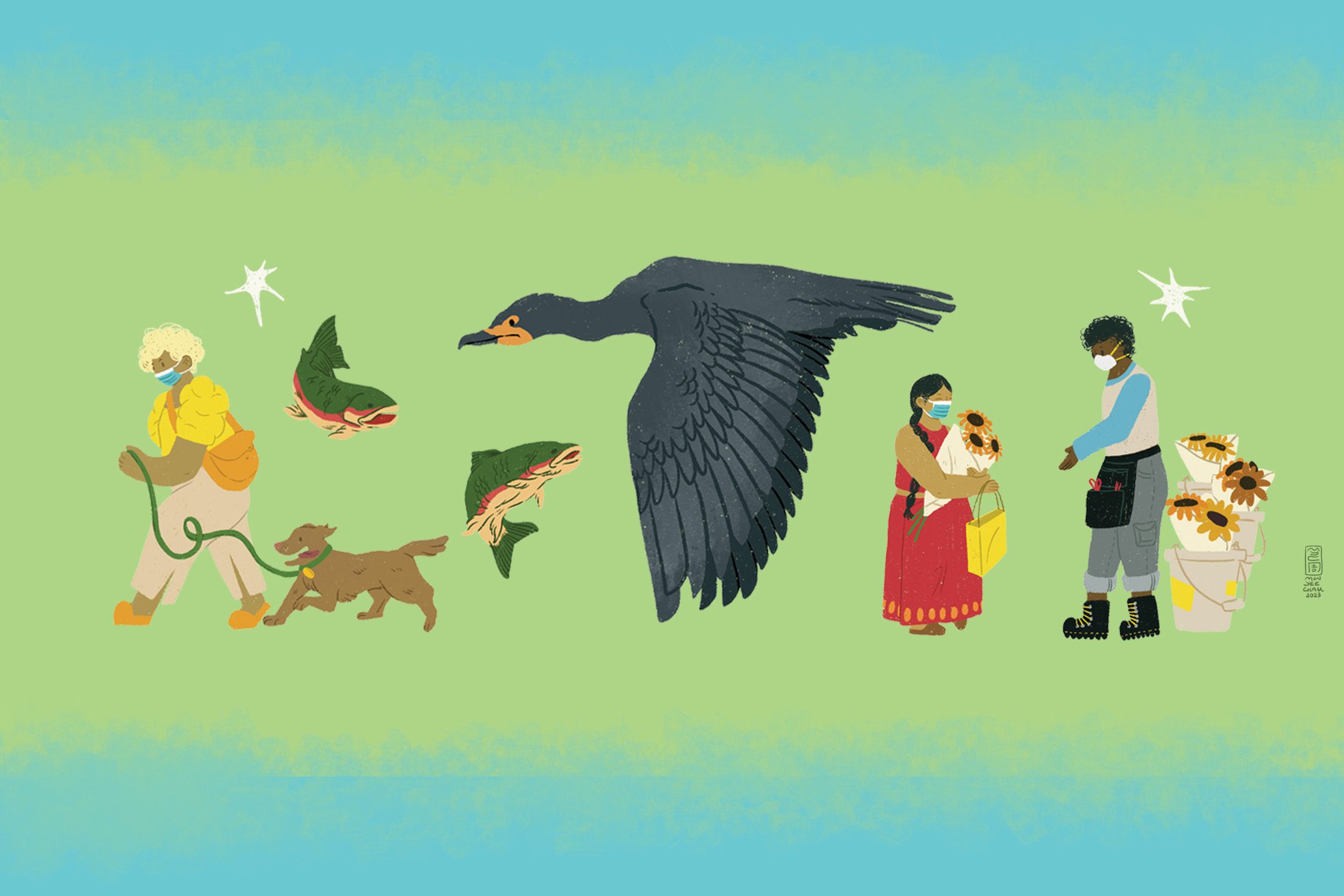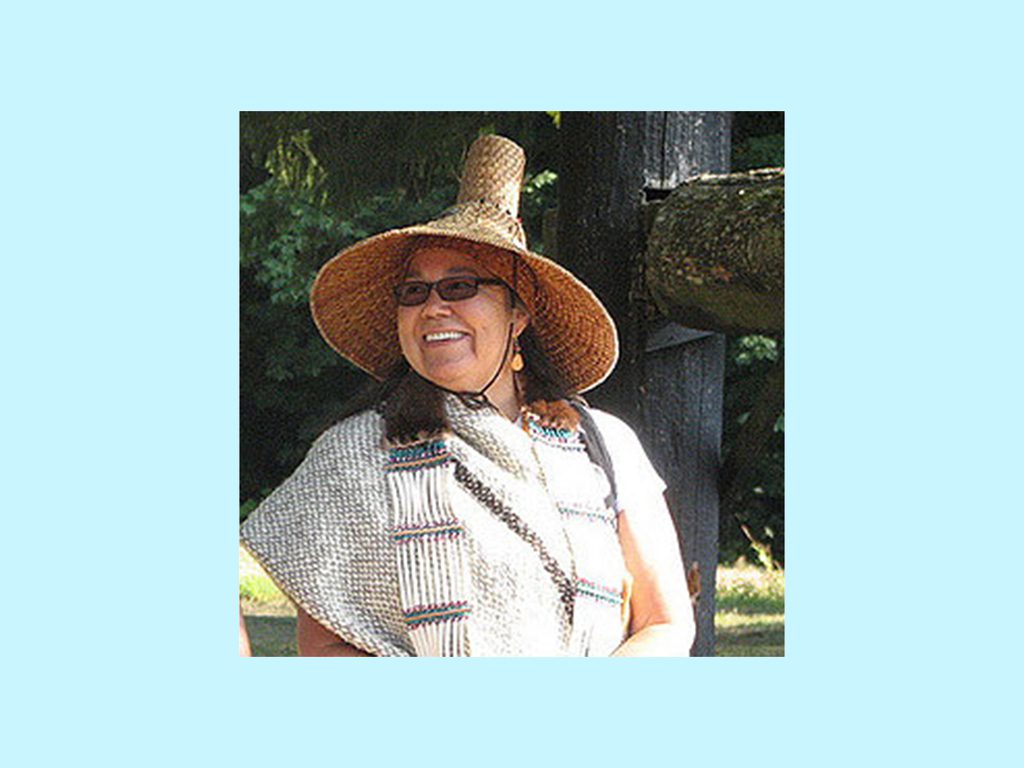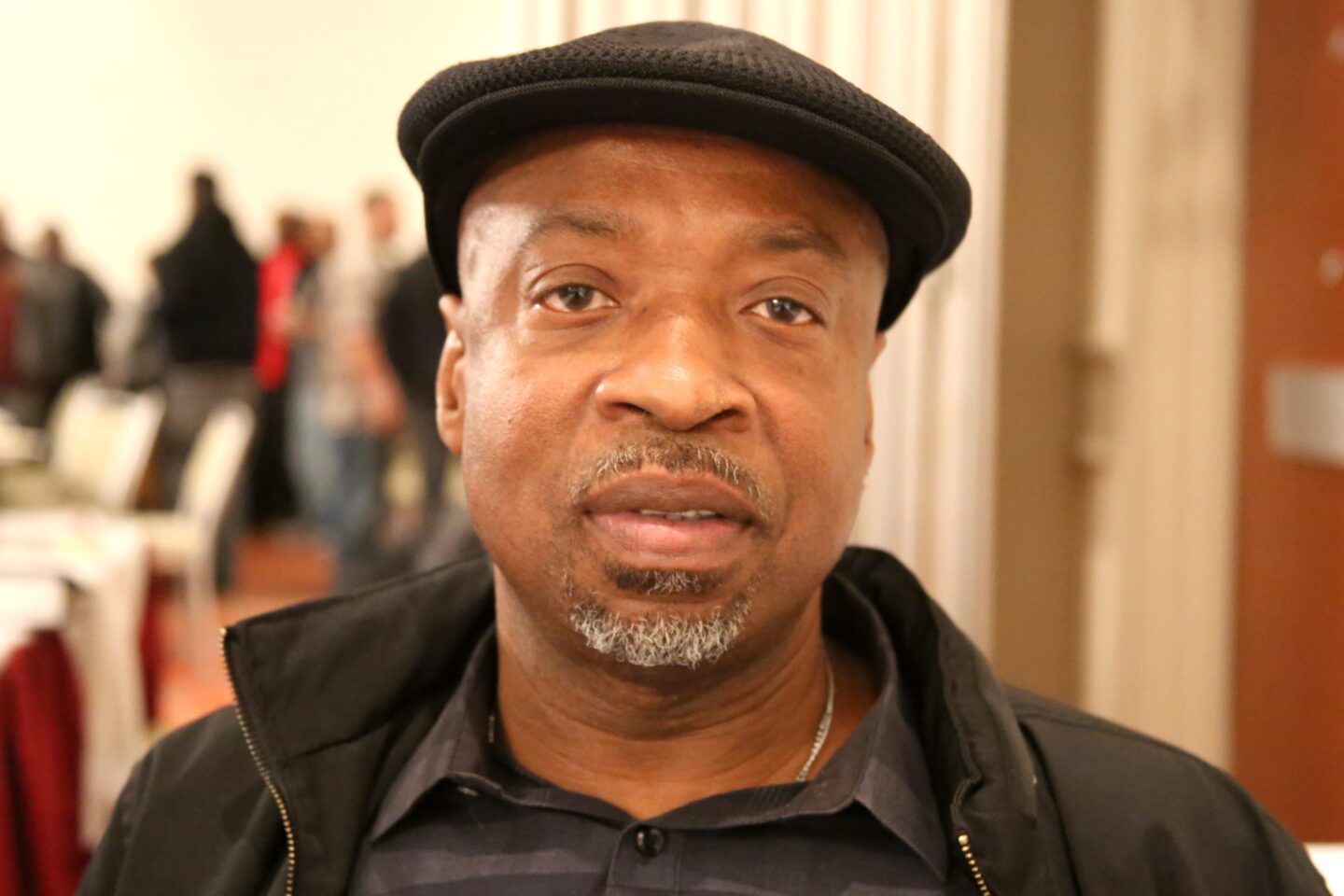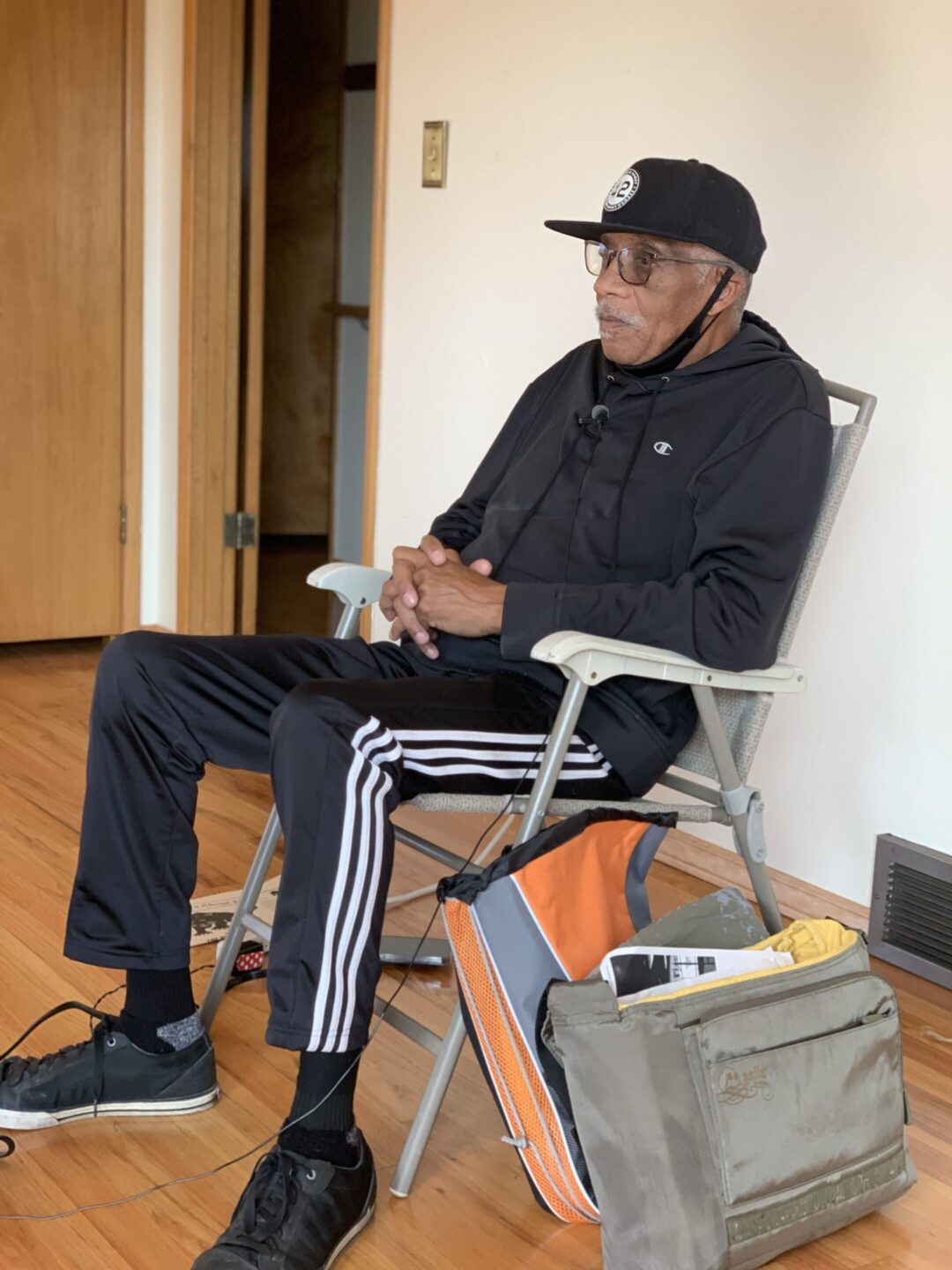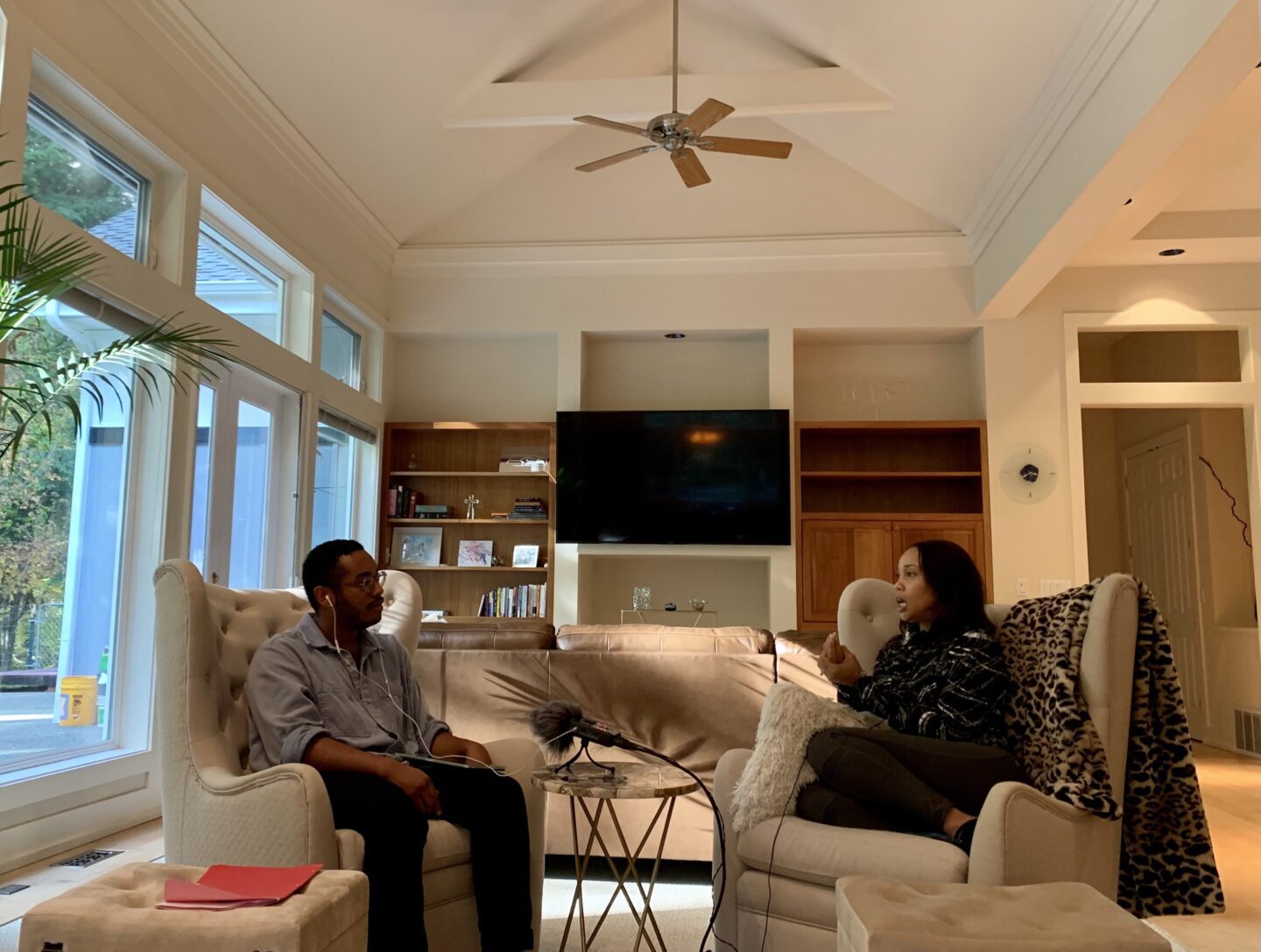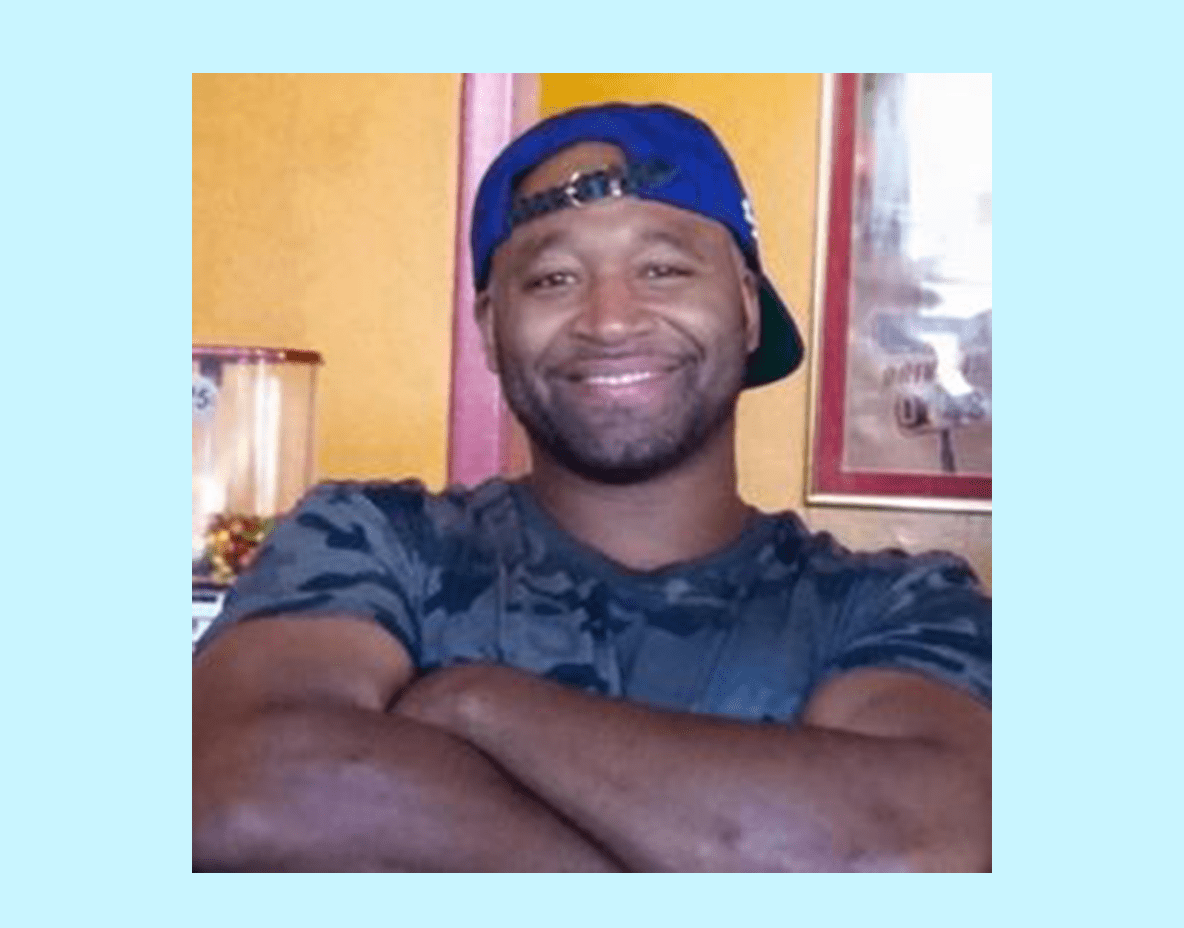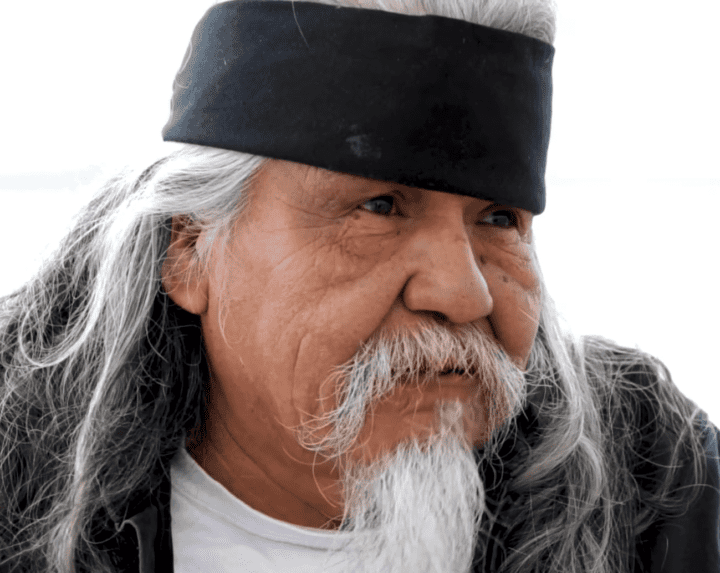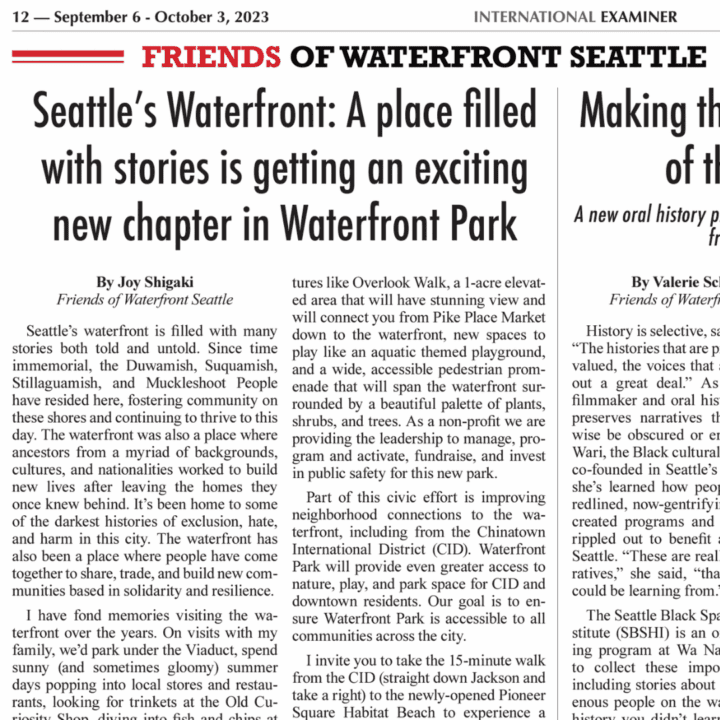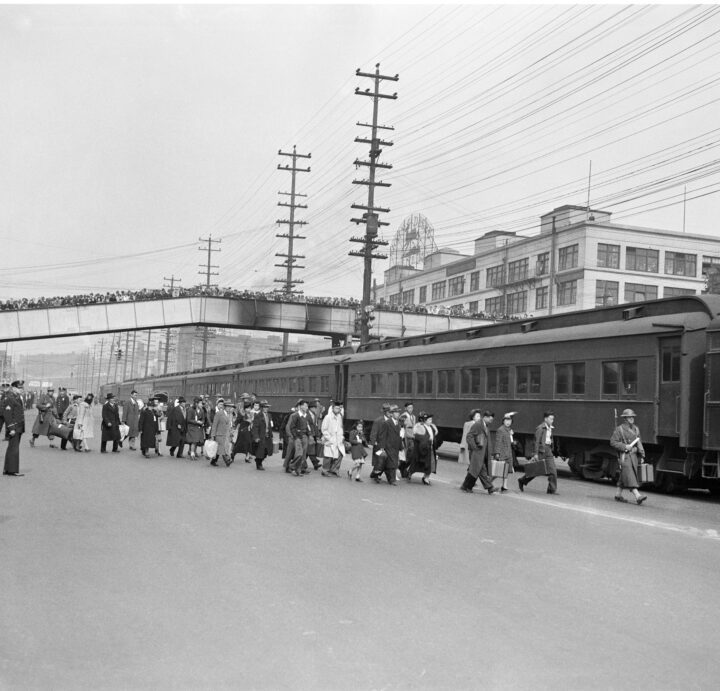Illustration by Monyee Chau.
Waterfront Histories: Seattle Black Spatial Histories
Audio Stories with Black Spatial Histories
Here is a collection of some of the stories and oral histories of Black, African American, and Indigenous community members from interviews conducted and edited by Ricky Reyes and Sierra Parsons, two members of the 2021-2023 SBSHI Cohort.
In 2021, Friends of Waterfront Seattle supported the work of Wa Na Wari‘s Seattle Black Spatial Histories Institute (SBSHI) and its inaugural cohort’s work on community-based oral history and Black memory work in Seattle.
“As an Indigenous person, and as a tribal elder, [Marilyn Wandrey’s] experience is so different from how the waterfront is explained by some of the longshoremen that I interviewed. Like her description of being the captain of the Raven canoe and seeing huge container ships passing by, coming so close that people in the canoe thought they were near death.”
– Sierra Parsons, Oral History Fellow at the Seattle Black Spatial Histories Institute (SBSHI)
Marilyn Wandrey
Marilyn Wandrey is a Suquamish Elder and Artist. She has been captain of the Raven canoe for 28 years. She is a member of the University of Washington Elders Committee, and serves on both the Suquamish Foundation board and the Suquamish Museum board. She formerly served as the Chair/Executive Director for the Puget Sound Health Board made up of 10 Puget Sound Indian Tribes. She was the first Regional Administrator for State of Washington Indian Policy and Support Services (Region 5). She is a weaver and teacher, and also enjoys writing poetry and stories in her spare time. She grew up and still lives in Suquamish on the Port Madison reservation.
“Black longshore workers were first recruited as strikebreakers during the 1916 longshore strike, but were later admitted into the union. However, they were often relegated to secondary status and did not have the same opportunities for job dispatch as their white counterparts.”
– courtesy of the University of Washington’s online exhibit, The Seattle General Strike. Learn more about Seattle’s Black Longshoreman and their entry into that industry in the early 1900’s on the University of Washington’s Black Community page.
Kim Farrison
Kim Farrison, born in Tacoma and the son of Ted Farrison, grew up playing sports and competing at the national level. Kim won the Olympic regional trials for wrestling in 1980, considered pursuing a career in teaching, and went on to serve in Local 19 and Local 52 ultimately growing his career in the clerk’s division. Kim became the first Black Chief Supervisor on the West Coast. Kim is active in the church, a proud grandparent, and continues his work in union organizing as a Business Agent.
A lot of times folks will ask in interviews, ‘What happened, when did that happen?’ But with oral history, we got to dive deep into really understanding what it looked like and what it felt like. And what was important about being in the union hall in the ‘90s or being by the docks in the ‘60s and ‘70s.”
– Ricky Reyes, Oral History Fellow at the Seattle Black Spatial Histories Institute (SBSHI)
Gabriel Prawl
Gabriel Prawl was born in Panama and immigrated to New York when he was 15. At the age of 16, Prawl moved to the Pacific Northwest where he would start a long career with the International Longshore and Warehouse Union (ILWU). Prawl’s work started with Local 19 where he served as a casual and would work his way to becoming the chair of the Local 19 Education Committee. Eventually, Prawl would be elected the first African American President of ILWU Local 52 where he fought for workers rights and played a big role in union organizing.
Garry Owens
Garry Owens was a Seattle-born organizer and community member. Owens’ long history of activism included involvement in the Franklin High Seattle Chapter of the Congress of Racial Equity, founding the 1968 University of Washington Black Student Union and participating in the Seattle Black Panther Party.
LeRin Farrison
LeRin Farrison, daughter of Kim Farrison and sister to Kim Farrison Jr., grew up between Washington and California playing soccer. LeRin scored the inaugural goal for the women’s team at SPU, successfully transitioned into a longshoring career and became the first Black Woman longshore clerk and assistant chief on the West Coast.
Kim Farrison Jr.
Kim Farrison Jr., born and raised in Seattle and Tacoma is a part of a family legacy of Black longshore community members including his sister (LeRin Farrison), father (Kim Farrison), and grandfather (Ted Farrison). He grew up playing football competitively and now works as a longshoreman on the Seattle Waterfront and enjoys spending time with his family.
